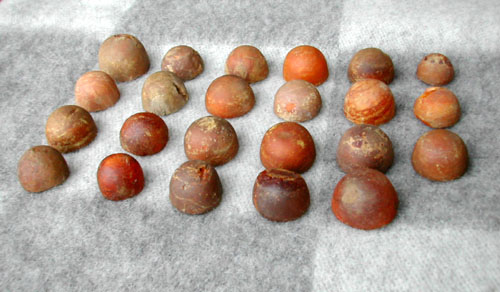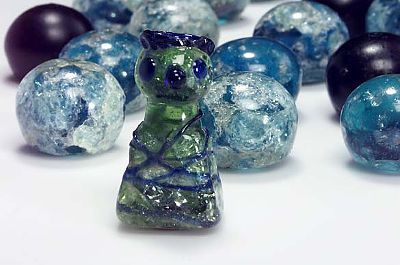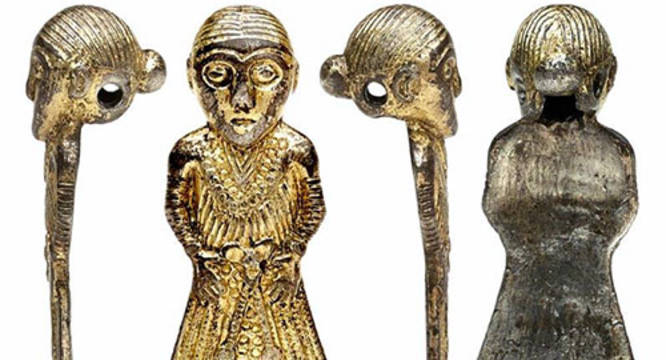Oh, there's so much to say about this project! I've been eager to work on it since I first received the commission request. The original request was for a set of Tafl pieces as well as a set of Tak Pieces. (There is another blog post with more information on the Tak Pieces Here.) When I first investigated TAfl, I discovered that it was (almost certainly) the inspiration for the Discworld Book and Game of Thud!
The two games were incredibly different projects. Where the Tak pieces required regularity and precision, Tafl was a lot freer and more open to interpretation. Tak was based on an account of a fictional strategy game, and Tafl has hundreds, or even thousands of years of history. Tak had only a few resources from which to draw (due to its fictional origins) and Tafl has a broad array of examples and artifacts.

Tafl is a strategy game, featuring mismatched "armies" wherein the smaller force must defend their king. Tafl is a word from Old Norse, meaning "table" or "board" Hnefatafl distinguishes this particular game from other board games, and is a combination of the word tafl with Hnefi, which apparently can mean either "king" or "fist" (Perhaps depending on the translator, era of the language, etc. - or maybe shoddy internet research on my part - who knows)
The origins of the game itself are, as with many antiquities, difficult to determine. There were similar games in ancient Greece and Rome, and game pieces that may (or may not) have been Hnefatafl pieces have appeared from as early as the 5th century AD.
The sheer number of artifacts discovered astounds me - board games are such small intimate reminders of daily life, and it's incredible that researchers have found so many and in such variety. Hnefatafle artifacts have been discovered that were made from: horses teeth, walrus tusks, glass, amber, bone, and stone. Undoubtedly players would have used wooden pieces and improvised pebbles, etc. as well.
I was particularly inspired by pieces made of glass and amber, with their many colors and textures, as well as intricate patterns and designs.
This link will direct you to a collection of archaeological finds, including a variety of pieces and board fragments.
Drawn by the blue glass and chestnut and honey tones of baltic amber, in building this set I decided to draw from those colors and a combination of ancient and modern aesthetics.
In designing the pieces themselves, I wanted to retain some primitive elements, but I also wanted to echo varying colors and the bubbles frequently found in glass and amber. (though the amber in the above photo is virtually solid most amber used in jewelry is transparent, lucid, and frequently filled with bubbles and inclusions.) So I opted to use a mokume gane technique for the pieces, layering semi-translucent clays with synthetic gold and silver leaf. This created a lot of nuanced shine and color in the individual pawns.

In my research, I came across many images of viking shields. As a rule, they had a central hub, and often a repeating radially symmetrical pattern, usually in three or four sections. I decided to arm the vikings with shields, metallic silver for the blue side (The army with superior numbers) and metallic gold for the amber side.
There are both male and female pawns, echoing recent discoveries that suggest a fairly strong balance of women among viking warriors. I can't say for sure what the divide is among these pieces; I simply haven't counted, though I can say with certainty that the balance is in favor of male vikings, if only because beads are easier to carve!
It was suggested that, for a "king" piece, I might want to draw some inspiration from a valkyrie figurine discovered in Denmark in 2012. In addition, I sought out a few other similar figures and reproductions thereof.
Links discussing the above images: Valkyrie - Additional Valkyrie Article, Valkyrie Reproduction, Female Figurine (Freya?) Revninge Woman
The queen piece I produced has the pleated skirt, sword, and shield of the valkyrie figurine. The figures seemed universally to have a layered V-shaped neckline, so I incorporated that, as well as trying to reproduce the unbroken nose-brow line. Her hair lacks the knot of the original - I simply couldn't find a way to make it fall naturally, so I incorporated a simple, but practical, single braid instead.
As a matter of personal choice, I wanted her to have a crown, since it's a traditional designation of royalty. I also chose to make it metallic gold over a darker clay, to help distinguish her physically from the other pieces. Since she was meant to be a focal piece in the game, I replaced the central hub on her shield with an emerald-colored rhinestone. This will hopefully add additional distinction.
I'm looking forward to being able to photograph these on the completed board (being produced by another artisan) but for now, I'm just really excited to be able to create pieces from a game that predates the printing press by a thousand years.




















































